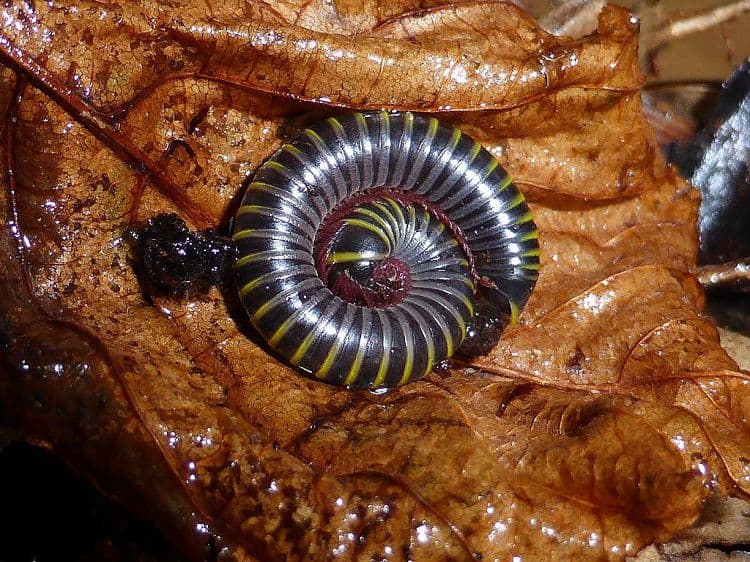Table of Contents
Most people do not consider millipedes when thinking of pets, but these interesting creatures do make fantastic pets for those fascinated by the weird and wonderful. And unlike their myriapod cousin the centipede, the millipede is gentle and slow and, more importantly, does not bite.
Millipedes are also unlike centipedes when it comes to diet. Whereas centipedes are full-on carnivores that like to eat delicacies such as crickets, cockroaches, and spiders, millipedes generally prefer a plant-based diet (although in the wild they will eat some insects if necessary).
are full-on carnivores that like to eat delicacies such as crickets, cockroaches, and spiders, millipedes generally prefer a plant-based diet (although in the wild they will eat some insects if necessary).
Millipedes Natural Habitat
Diving into the natural habitat of millipedes is like stepping into a world that’s teeming with life beneath the surface. Millipedes are incredibly adaptable creatures and can be found in a variety of environments worldwide, from the temperate woods of North America to the tropical rainforests of South America, Asia, and Africa.
However, if you’re searching for the most common home of these arthropods, look no further than under the leaf litter, within decaying logs, or in the rich organic matter found in the top layer of soil. They thrive in these damp, dark environments that provide them with their preferred diet: decaying organic matter, sometimes called detritus. This diet includes decomposing leaves, rotten wood, and even decomposing animals on occasion.
Soil Preference
Interestingly, millipedes are quite selective when it comes to soil. They have a penchant for soils rich in organic matter, offering not only a hearty menu of decaying plant material but also a humid and protected environment. This inclination towards moist soil means they play a crucial role in decomposition processes, recycling nutrients back into the soil – a role we might compare to nature’s recyclers.
Seasonal Changes and Millipedes
When discussing millipedes’ natural habitats, it’s essential to consider seasonal changes. During dry seasons or winter in colder regions, millipedes burrow deeper into the soil, where moisture levels are higher. This behaviour highlights their sensitivity to desiccation (drying out), and underscores the importance of maintaining a moist environment for millipedes kept in captivity.
While millipedes might not be the most glamorous of creatures, understanding their natural habitat reveals a fascinating world of decomposition and nutrient recycling, shedding light on their unique role in ecosystems around the world. This understanding also enables us to replicate their environment more effectively when we decide to bring them into our homes as intriguing, low-maintenance pets.
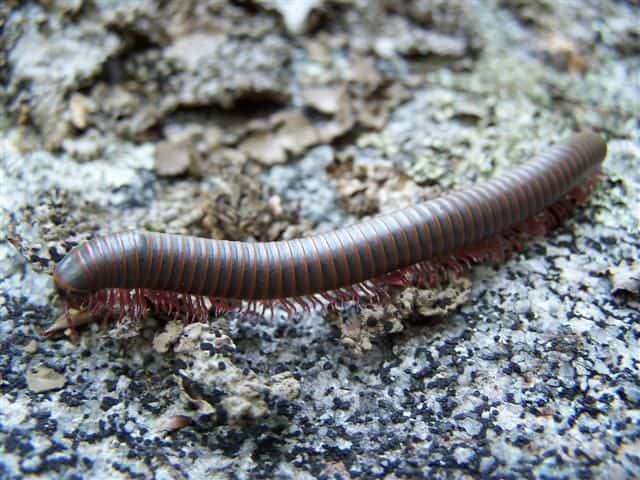
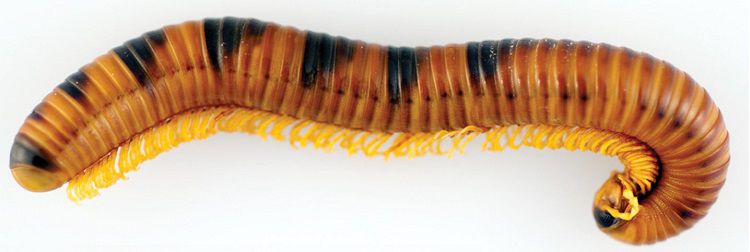
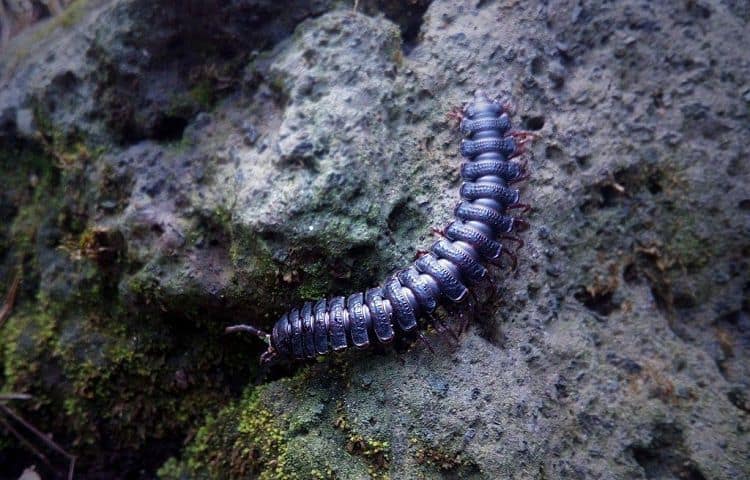
What to Feed Your Millipede Pet?
Millipedes are easy to care for, and when it comes to feeding there are a number of options available to you. Surprisingly, they will actually happily feed on the substrate they are living in, but you should also add other foods to ensure the millipede is getting all the nutrients it requires for a healthy existence.
are easy to care for, and when it comes to feeding there are a number of options available to you. Surprisingly, they will actually happily feed on the substrate they are living in, but you should also add other foods to ensure the millipede is getting all the nutrients it requires for a healthy existence.
In their natural environment, millipedes enjoy eating decaying or damp wood as well as decaying leaf matter. If their environment becomes too dry though, they tend to move on to living plants while some will occasionally eat bugs.
In captivity, you can provide a variety of food options for the millipede to see what it enjoys the best. Fortunately for you, most of the food millipedes like to eat are readily available in your home. You can offer things such as potato peelings as well as other vegetables and fruits. You could give it foods such as squash, bananas, melon, apples, cucumbers, and romaine lettuce, to name but a few things. Iceberg lettuce should be avoided though because it just doesn’t have enough nutrients for the millipede to thrive.
When offering foods such as apples and cucumbers, it is necessary to peel and slice them as the millipede will find it tough trying to chew through the skin as their mouthparts are not that strong.
Here’s a table detailing some things millipedes eat:
| Food Category | Examples | Notes |
|---|---|---|
| Decaying Plant Matter | Fallen leaves, decaying wood | This is the primary food source for millipedes in the wild |
| Fruits | Apples, bananas, melons | Make sure to remove the skin, as millipedes might find it tough to eat |
| Vegetables | Cucumbers, squash, potato peelings | Avoid vegetables with pesticides |
| Leafy Greens | Romaine lettuce | Avoid iceberg lettuce due to low nutrient content |
| Proteins | Rabbit pellets, fish food flakes | To be offered once a week for additional nutrients |
| Insects | Small bugs, insects | Occasionally eaten, mostly in the wild |
| Other | Cuttlefish bone | Provides a source of calcium, to be offered occasionally |
| Unsafe Foods | Processed foods, high salt content foods, spicy or fermented foods, foods treated with pesticides | These types of foods are not safe for millipedes and should be avoided |
Specific Nutritional Requirements of Millipedes
Millipedes, like any living organism, require a specific set of nutrients to sustain their life processes. It’s not enough to just know what they eat, understanding the nutritional composition of their diet and how it aids in their health and survival is also essential.
Macronutrients: Carbohydrates, Proteins, and Fats
Millipedes’ primary food source is decaying organic matter, rich in carbohydrates, which provides them with the energy they need for daily activities. Carbohydrates are broken down into simpler sugars, utilized for movement, growth, and reproduction.
Protein, although less prominent in their diet compared to other nutrients, plays a vital role in their body structure and functions. It is necessary for cell regeneration and the development of their exoskeleton. While proteins can be obtained from plant matter, the occasional consumption of small insects or invertebrates can supplement their protein intake.
can supplement their protein intake.
Fat is another essential nutrient for millipedes, though they require it in smaller quantities. Fats, found in the cell walls of plants and insects, are a source of long-term energy storage and also contribute to cellular function.
Micronutrients: Vitamins and Minerals
Just as important as macronutrients are the micronutrients – vitamins and minerals – that millipedes obtain from their diet. For instance, calcium plays a critical role in the development and maintenance of a healthy exoskeleton. Millipedes often ingest soil and rotting wood, rich in minerals, to meet their calcium needs.
Vitamins, especially B vitamins found in decaying plant material, are also necessary for various metabolic processes.
In essence, the millipede’s diet, a potpourri of decaying organic matter, provides a wealth of nutrients necessary for its survival. However, when kept in captivity, understanding these nutritional requirements can help in curating a diet that ensures the millipede’s health and longevity. Keep in mind that a balanced diet, enriched with a variety of organic matter and occasional supplements, can meet all their nutritional needs.
Potential Health Risks from Improper Diet
Like any creature, a millipede requires a balanced diet to maintain its health. However, when kept as a pet, it becomes dependent on its caregiver for nutrition. Unfortunately, this can sometimes lead to an improper diet that can have detrimental effects on a millipede’s health.
Nutrient Deficiencies
One of the primary concerns is nutrient deficiencies, particularly in protein and calcium. Insufficient protein intake may lead to slower growth rates, while a lack of calcium can cause problems with their exoskeleton development and molting. Millipedes with calcium deficiencies often exhibit issues with their segments, such as deformities or difficulties with molting. To ensure that your millipede receives enough protein and calcium, consider adding sources like cuttlefish bone or calcium-fortified supplements to its diet.
Overfeeding and Obesity
Believe it or not, millipedes can also suffer from obesity due to overfeeding. While millipedes are typically low-energy creatures, an excessive amount of food, particularly nutrient-dense food items, can lead to weight gain. This obesity can put pressure on their exoskeleton and impact their mobility. The best way to avoid this is by following a consistent feeding schedule and carefully monitoring the millipede’s food intake.
Toxicity from Inappropriate Foods
Lastly, certain foods, such as some fruits and vegetables treated with pesticides, can pose a risk of toxicity. Millipedes don’t have a sophisticated digestive system to handle these kinds of toxins, which can lead to health complications or even death. Therefore, always ensure that any fruits or vegetables you feed to your millipede are thoroughly washed, or even better, opt for organic produce.
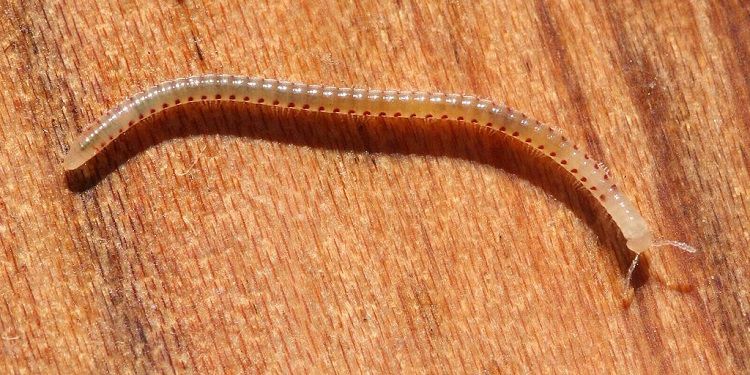
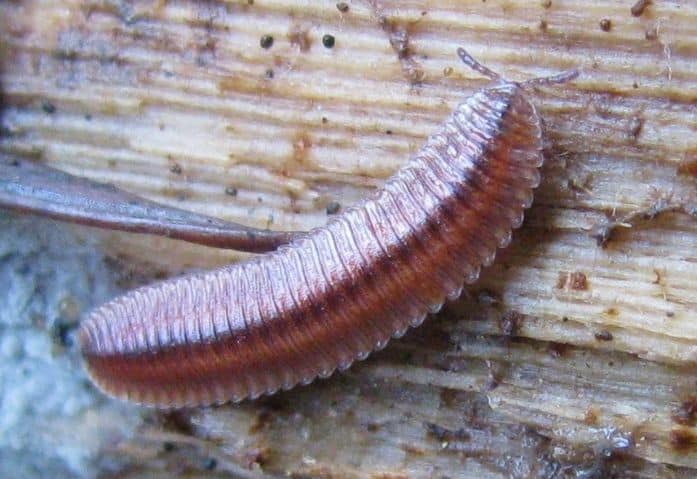
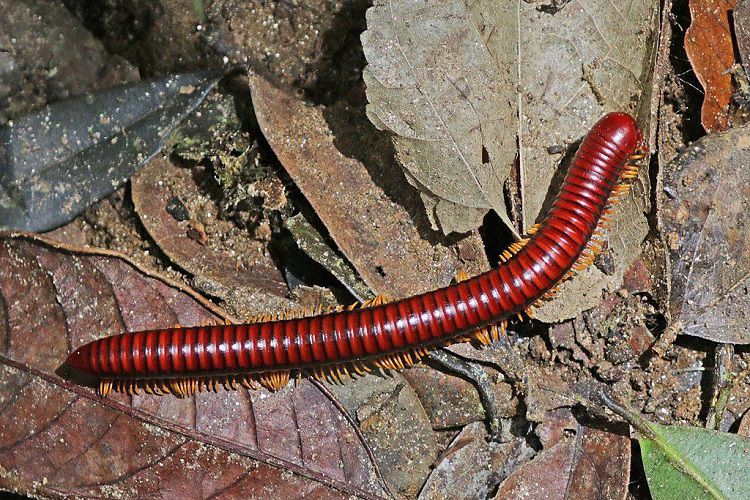
Varieties of Millipedes and Their Specific Dietary Needs
As you venture deeper into the fascinating world of millipedes, you’ll discover that this is a richly diverse group with over 12,000 species . Let’s focus on some of the more common varieties that hobbyists may encounter and explore their unique dietary preferences.
. Let’s focus on some of the more common varieties that hobbyists may encounter and explore their unique dietary preferences.
North American Millipede (Narceus americanus)
This large, cylindrical species, easily identifiable by its reddish-brown color and dark stripes, is prevalent in the eastern United States. The North American millipede is a voracious decomposer, breaking down organic matter such as decaying leaves, fallen wood, and even animal carcasses. While they are quite content with a diet composed mostly of decaying plant matter, it’s beneficial to supplement their diet with calcium-rich foods, such as cuttlebone or eggshells, to aid in their exoskeleton development.
Bumblebee Millipede (Anadenobolus monilicornis)
Native to the Caribbean, these small millipedes are striking with their alternating bands of black and yellow. They are particularly fond of fruits, vegetables, and decaying wood. Bumblebee millipedes can also benefit from the occasional protein boost, so consider introducing a small piece of fish flake or a dead insect into their diet every few weeks.
Giant African Millipede (Archispirostreptus gigas)
Considered one of the largest millipedes, the Giant African millipede is a sight to behold. This species, native to East Africa, appreciates a diet rich in fresh vegetables, fruits, and decomposing organic matter. Calcium supplementation is vital for these millipedes, particularly for those in captivity, as it assists in healthy exoskeleton development.
Flat-Backed Millipede (Polydesmida)
This species, known for its distinctive flattened segments, is found worldwide but is particularly prevalent in the tropics. Flat-Backed millipedes are generalist decomposers, feasting on a range of decaying plant and animal matter. However, it’s also worth noting that some members of this group are known to have a partiality for fungus, making a little added mushroom a welcome treat.
How Often Should You Feed Your Millipede?
As millipedes are nocturnal, they will typically feed during the night. To that end, you should provide food every evening but be sure to remove any uneaten items the following morning to prevent it from spoiling.
Another way to ensure that the millipede is getting sufficient nutrients, offer it some rabbit pellets, fish food flakes, or cuttlefish once a week.
Water is also something to think about, and while the millipede should generally be okay in a humid environment, a tank that is too dry can result in harm to the creature. Make sure you are regularly spraying the walls of the enclosure as well as the substrate. You could also place a damp cotton pad on top of the substrate so that there is access to water if required (although it should be able to get sufficient water from the food you provide).
Avoiding Overfeeding and Obesity in Millipedes
The Importance of Portion Control
In the intricate world of millipede care, it’s not only the content of their diet that matters but also the quantity. Overfeeding your millipede can lead to obesity and related health issues. These creatures, while hardy, have a natural balance that must be maintained for optimal health.
To regulate their intake, start by observing the size of your millipede. The rule of thumb is to offer food that is approximately the size of the millipede’s body every day. But remember, this is just a starting point. Millipedes, like many living creatures, can have varying appetites. Make sure to remove any uneaten food daily to avoid spoilage and ensure freshness.
Observing Your Millipede’s Eating Habits
One excellent way to gauge whether you’re feeding your millipede the right amount is to keep an eye on its eating habits. If you notice that the food you’ve offered is consistently devoured within a few hours, consider slightly increasing the amount. On the other hand, if the millipede leaves behind significant amounts of uneaten food, you might be offering too much and should scale back.
The Consequences of Overfeeding
It’s important to remember that millipedes aren’t just slow when it comes to movement; they also have a slow metabolism. Overfeeding can lead to obesity and put unnecessary strain on their bodies. While a millipede’s rounded appearance might make it difficult to spot weight gain, a millipede consistently refusing food or becoming less active might be signs of overeating.
Remember, balance is key when caring for millipedes. By understanding their dietary needs and keeping a watchful eye, you can ensure a healthy and happy life for your little myriapod .
.
Adjusting Portions as Needed
As your millipede grows and matures, its nutritional needs and portions will change. Adjust the quantity of food accordingly, keeping a keen eye on your pet’s consumption and general activity level. Millipede care requires attentiveness, but with a little observation and effort, you can master the art of feeding these fascinating creatures just the right amount.
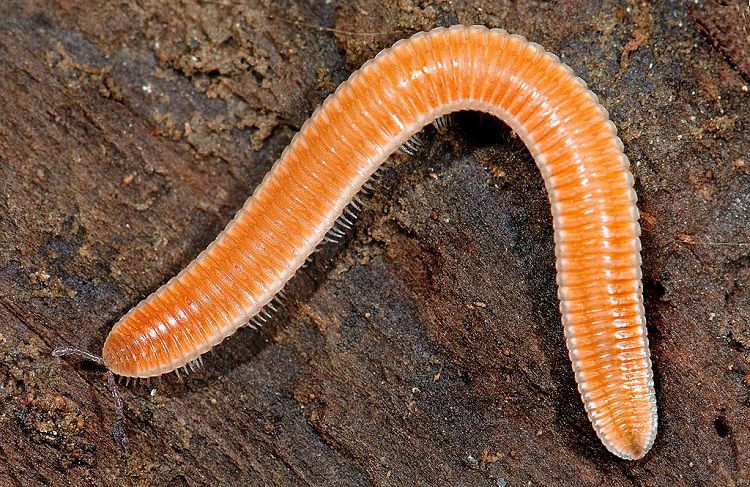
Signs of Nutritional Deficiencies in Millipedes
Millipedes, despite their seemingly undemanding demeanor, have specific dietary requirements. Detecting signs of nutritional deficiencies is essential in ensuring their well-being. While millipedes are pretty sturdy, an imbalance in their diet can manifest in various ways, affecting their health and longevity.
Physical Changes
One of the primary indicators of nutritional deficiencies is physical changes. Millipedes have a tough exoskeleton, which should normally exhibit a healthy, vibrant color, depending on the species. If you notice a noticeable dullness or discoloration in your millipede’s exoskeleton, it might be due to a lack of essential nutrients.
In more severe cases, improper nutrition can cause moulting issues. Millipedes, like other arthropods, moult their exoskeleton as they grow. A nutrient-deficient millipede might experience irregular moulting or show signs of distress during this process, such as difficulty in shedding the old exoskeleton or unusually long moulting periods.
Behavioral Changes
The behavior of your millipede can also provide clues about its nutritional health. An underfed or malnourished millipede may become lethargic, showing less activity than usual. Furthermore, changes in feeding habits, such as reduced appetite or seeming uninterested in foods it usually enjoys, could indicate nutritional issues.
What Can You Do?
Upon observing these signs, it’s recommended to re-evaluate your millipede’s diet. Remember, these creatures thrive on a diet rich in organic matter, primarily decaying leaves and wood. However, supplementation with fruits, vegetables, and the occasional protein source can help round out their nutrition. Consider including a variety of foods in their diet to ensure they receive a balanced spread of nutrients.
In cases of persistent health issues despite a balanced diet, it might be necessary to consult a professional specializing in arthropods for advice or potential treatment. It’s important to remember that millipedes are unique creatures with distinct needs, and understanding these needs is vital to their care and preservation.
Interaction with Other Species in a Multi-Species Terrarium
When you’re thinking about housing millipedes alongside other species in a terrarium, it’s important to understand the potential impact their dietary habits may have on their co-occupants. Remember, millipedes, with their preference for decomposing organic matter, can play a significant role in your terrarium ecosystem.
Coexisting with Detritivores
Typically, millipedes share a dietary niche with other detritivores, like woodlice and certain types of beetles. These creatures also thrive on decaying plant matter, which means they could compete with millipedes for the same resources. However, a balanced terrarium ecosystem can support multiple detritivores without triggering a food scarcity crisis. It’s all about ensuring a plentiful supply of decaying organic matter to satiate all occupants.
Millipedes and Plant Life
Even though millipedes mostly consume decaying matter, in drier conditions, they may nibble on living plants. This dietary switch could affect plant-dwelling species that rely on foliage for food or habitat. Millipedes usually won’t cause significant harm to healthy plants, but if you notice plant health declining or other species being impacted, you might need to reassess the moisture levels in your terrarium or provide additional food sources.
Potential Predation Threat
Let’s not forget that in a terrarium environment, some animals might view millipedes as a potential food source. Creatures such as certain spiders, frogs, or even some bird species, may prey on millipedes if given the opportunity. While millipedes have defensive measures, it’s important to carefully consider the mix of species in your terrarium to ensure the safety of all inhabitants.
Maintaining a multi-species terrarium is a complex but rewarding task. While millipedes are generally low-impact inhabitants, it’s essential to keep an eye on the overall ecosystem to ensure every species thrives.
What do Millipedes Eat – Conclusion
In conclusion, knowing what millipedes eat is crucial to their wellbeing, both in the wild and in captivity. Offering a diet rich in fresh fruits, vegetables, and decomposing organic matter, along with suitable supplements like calcium, is essential. It’s also important to monitor their behavior and consult a professional if necessary.
Key Takeaways
- Millipedes prefer a plant-based diet, but will eat insects if necessary.
- They require a humid environment and access to water.
- Their diet should be balanced and include a variety of organic matter and occasional supplements.
- Overfeeding can lead to obesity and health complications, so portions should be carefully monitored.
- Millipedes can be kept as pets and there are various species with unique dietary preferences.
- Other detritivores may compete with millipedes for resources, so a balanced terrarium ecosystem is important.
- Careful consideration should be given to the mix of species in a terrarium to ensure the safety and well-being of all inhabitants.
FAQs
Q: What do millipedes typically eat in the wild?
A: Millipedes are generally detritivores, feeding on decaying plant matter such as leaves and wood. They may also occasionally consume small insects if necessary.
Q: What can I feed a pet millipede?
A: You can feed your pet millipede a variety of fruits and vegetables like squash, bananas, apples, cucumbers, and romaine lettuce. Avoid iceberg lettuce, as it lacks sufficient nutrients.
Q: How often should I feed my millipede?
A: As millipedes are nocturnal, it’s best to provide food every evening. Be sure to remove any uneaten items the following morning to prevent spoilage.
Q: Do millipedes need water?
A: While millipedes can obtain much of their hydration from their food and a humid environment, they also benefit from occasional misting or a damp cotton pad placed on top of their substrate.
Q: Can millipedes eat meat or other proteins?
A: While millipedes are primarily herbivorous, they can occasionally consume small insects. You can supplement their diet with rabbit pellets or fish food flakes for additional protein.
Q: Can millipedes eat live plants?
A: Yes, millipedes can eat live plants, particularly in dry conditions. However, they prefer decaying organic matter.
Q: Are there any foods that are harmful to millipedes?
A: Millipedes should not be fed foods that are high in salt, spicy, or fermented. It’s also important to avoid giving them any food treated with pesticides.
Q: Do different species of millipedes have different dietary needs?
A: While the basic diet of most millipedes is similar, some species may have specific dietary preferences. Always research the specific needs of your millipede species.
Q: Can millipedes overeat?
A: Overfeeding is generally not a problem for millipedes, as they tend to eat slowly. However, it’s important to maintain a balance to avoid unnecessary waste and potential mold growth.
Q: What signs should I look for to tell if my millipede is getting the right nutrients?
A: Healthy millipedes are typically active and have a solid, segmented appearance. If your millipede is lethargic or shows signs of molting difficulties, it may be experiencing nutritional deficiencies.
Q: Can millipedes eat fruit peels and cores?
A: Yes, millipedes can eat certain fruit peels and cores, but these should always be thoroughly cleaned to remove any potential pesticide residues.
Q: How can I tell if my millipede likes a certain type of food?
A: If your millipede consistently eats a certain type of food and appears healthy, this is a good indication that it enjoys and benefits from that food.
Q: Can millipedes eat human food leftovers?
A: While some safe fruits and vegetables may be part of human meals, it’s important not to feed millipedes processed foods or foods with added salt, spices, or sauces.
Q: Do millipedes eat every day?
A: While millipedes have access to food every day, their slow metabolism means they don’t need to eat a lot at once. They may not eat all the food provided in one day.
Q: What kind of food can I give my millipede for treats?
A: Millipedes may particularly enjoy certain soft fruits, such as bananas or melons, which can be offered as occasional treats in addition to their regular diet.
Photo Credits:
- Featured Image (Yellow-Banded Millipede): Totodu74
 – This file is licensed under the Creative Commons
– This file is licensed under the Creative Commons Attribution-Share Alike 3.0 Unported
Attribution-Share Alike 3.0 Unported license.
license. - Giant Fire Millipede: Charles J Sharp – Sharp Photography
 – This file is licensed under the Creative Commons
– This file is licensed under the Creative Commons Attribution-Share Alike 4.0 International
Attribution-Share Alike 4.0 International license.
license. - Octoglena bivirgata: Sam McNally – https://www.inaturalist.org/photos/275405
 – This file is licensed under the Creative Commons
– This file is licensed under the Creative Commons Attribution-Share Alike 4.0 International
Attribution-Share Alike 4.0 International license.
license. - Sagmatostreptus strongylopygus: Henrik Enghoff. 2011. Trans-segmental serial colour patterns in millipedes and their developmental interpretation (Diplopoda). International Journal of Myriapodology 6: 1–27, doi:10.3897/ijm.6.1949
 – This file is licensed under the Creative Commons
– This file is licensed under the Creative Commons Attribution 4.0 International
Attribution 4.0 International license.
license. - American Giant Millipede: Randal J. (RJFerret) – This file is licensed under the Creative Commons Attribution-Share Alike 2.5 Generic license.
- Yellow-Spotted Millipede: Franco Folini
 – This file is licensed under the Creative Commons
– This file is licensed under the Creative Commons Attribution-Share Alike 3.0 Unported
Attribution-Share Alike 3.0 Unported license.
license. - Apheloria virginiensis: Bob Walker – This file is licensed under the Creative Commons
 Attribution-Share Alike 4.0 International
Attribution-Share Alike 4.0 International , 3.0 Unported
, 3.0 Unported , 2.5 Generic
, 2.5 Generic , 2.0 Generic
, 2.0 Generic and 1.0 Generic
and 1.0 Generic license.
license. - Spotted Snake Millipede: Whitney Cranshaw – http://www.insectimages.org/browse/detail.cfm?imgnum=5393517
 – This file is licensed under the Creative Commons
– This file is licensed under the Creative Commons Attribution 3.0 Unported
Attribution 3.0 Unported license.
license. - Flat Millipede: Danny Khorskhi – This file is licensed under the Creative Commons
 Attribution-Share Alike 4.0 International
Attribution-Share Alike 4.0 International license.
license.

